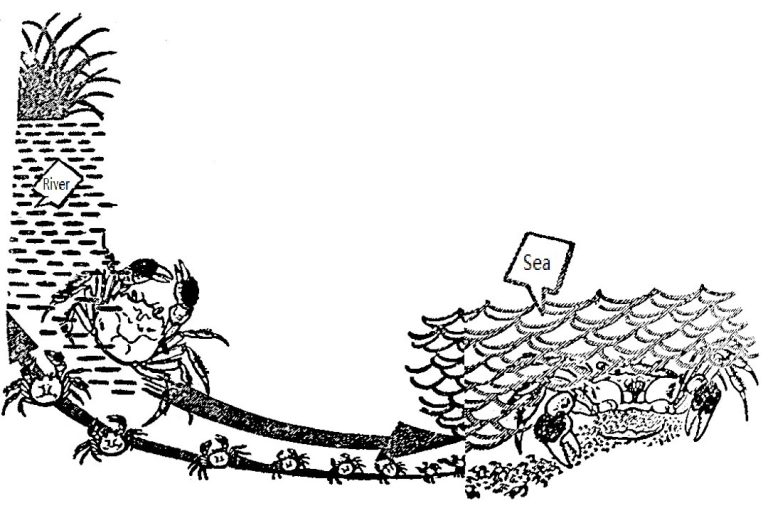Crabs, commonly known as river crabs or hairy crabs, are scientifically referred to as Chinese mitten crabs. They are famous freshwater crabs in China, distributed widely from Liaoning in the north to coastal provinces like Fujian in the south. However, the crabs from Yangcheng Lake in Kunshan, Jiangsu, and Dongdian in Shengfang, Hebei, are the largest and most renowned, with high production levels, earning nationwide fame.
Throughout their lives, crabs spend a significant period living in burrows along the banks of rivers, lakes, or rice fields. These burrows are typically situated between high and low water levels and have curved, tubular structures. Since crabs dislike strong light, they often hide in shaded areas or burrows during the day, coming out to forage and move around only at night or in dim light. They prefer to prey on fish, shrimp, snails, clams, and other aquatic organisms, with some even entering farmland to feed on rice grains when hungry. Consequently, they can cause losses to freshwater fisheries, vegetables, and crops.
While it is commonly assumed that crabs spend their entire lives in freshwater, this is not entirely true. Although crabs grow up in freshwater, they lay their eggs in the sea. This behavior is somewhat similar to that of eels. Ancient Chinese observers had already noted the habit of crabs migrating to the sea to lay eggs. For example, in “Crab Records” by Fu Gong of the Song Dynasty, it is mentioned that “crabs return to the sea from the rivers at the turn of autumn and winter.” In the past, superstitious beliefs attributed this migration to crabs going to pay respects to the “Dragon King of the Sea.” However, their migration to the sea is for spawning purposes.
Scientists have observed that during early winter, mature crabs gather in groups and migrate to the sea along with the river currents. They often have to travel long distances, sometimes traversing several tens of kilometers of waterways, or even hundreds of kilometers in cases where they live in inland rivers such as the Yangtze River in Anqing. The reasons for such long-distance migrations and how they navigate through the meandering rivers remain somewhat of a mystery, requiring further research by zoologists. Nevertheless, it is universally recognized that mature crabs migrate to the sea for spawning.
Before migrating to the sea, mature crabs must undergo mating, during which they molt once again. This molting process is a crucial moment for crab mating.
After mating, the female crab goes to the sea to lay eggs. However, the eggs remain attached to its abdominal appendages, with each female carrying around a hundred thousand eggs, which hatch around the following spring. By that time, both the male and female crabs have aged, and they eventually die in the ocean.
The hatched larvae first enjoy abundant food in shallow waters. After several molts and metamorphoses, they become juvenile crabs, gradually approaching the beach with each high tide. They then follow the river currents back to the freshwater habitats where their parents lived. After approximately 3 to 5 years, when their bodies have grown fully, they embark on the same journey as their ancestors, traveling long distances to the sea for spawning. This migratory lifestyle has become an inherent characteristic of crabs.
Having understood the habit of crabs migrating to the sea, fishermen set up nets in rapids and turbulent areas of rivers during late autumn and early winter, ready to catch large quantities of plump freshwater crabs. Qingpu County in Shanghai is known for its abundant production of freshwater crabs, and as soon as the frost descends, fishermen gather along riversides and lakeshores at night, with lights sparkling everywhere, capturing thousands of pounds of crabs each night! The large crabs we eat are mature crabs that have migrated to the sea, usually after 3 to 4 years.

